Society
Ground Report: Why A Serial Molester In Muzaffarnagar's Jat Colony, Who Threatened Women With Acid, Raised Fears Of Renewed Jat-Muslim Tensions
Swati Goel Sharma
Jun 10, 2024, 02:51 PM | Updated 02:51 PM IST
Save & read from anywhere!
Bookmark stories for easy access on any device or the Swarajya app.
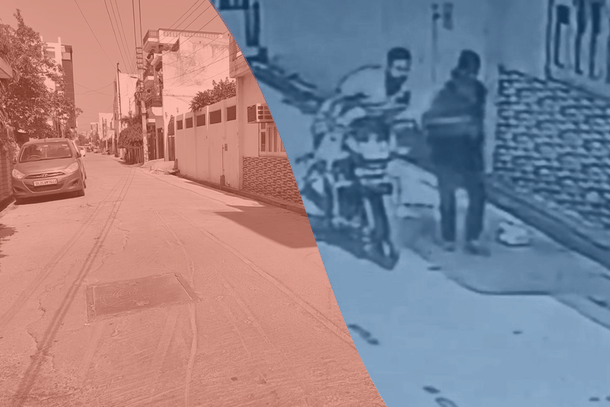
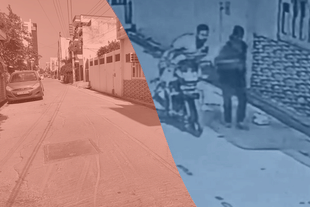
Three days ago, a disturbing video surfaced online showing a man on a motorcycle slapping the back of a girl walking in a residential lane. The footage, which quickly went viral, was traced back to a colony in Muzaffarnagar district of Western Uttar Pradesh.
It emerged that the man had been committing these acts of molestation for three months. He always carried a bottle of acid, threatening to disfigure his victims if they dared to report him.
The following day, police arrested the serial molester and released a video showing him limping while being escorted by officers. Police said he had injured his leg during the arrest attempt.
He has been identified as Mohammed Salman Qureshi, who is in his late twenties. His activities were centred in the upscale ‘Jat Colony’ in the Civil Lines area of Muzaffarnagar. This neighbourhood, home to approximately 7,000 residents, is predominantly inhabited by Hindu families from the Jat caste, as indicated by its name. It is home to several colleges and coaching institutes.
A visit to the colony on Saturday revealed mounting communal tensions, evoking memories of the 2013 communal riots in Muzaffarnagar, which resulted in at least 60 deaths.
The riots, sparked just 15 kilometres from Jat Colony, were ignited by a similar incident involving a Muslim man molesting a Jat woman.
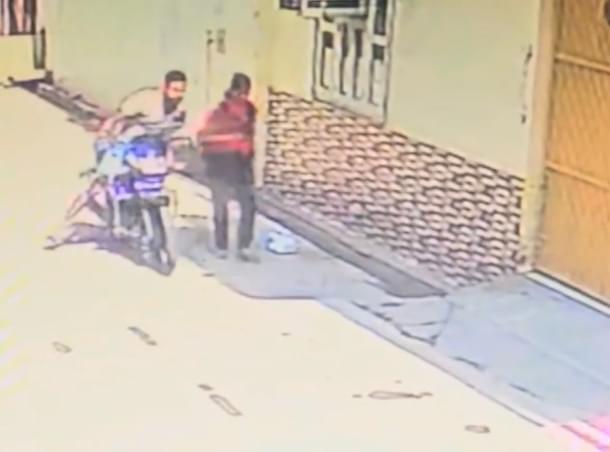



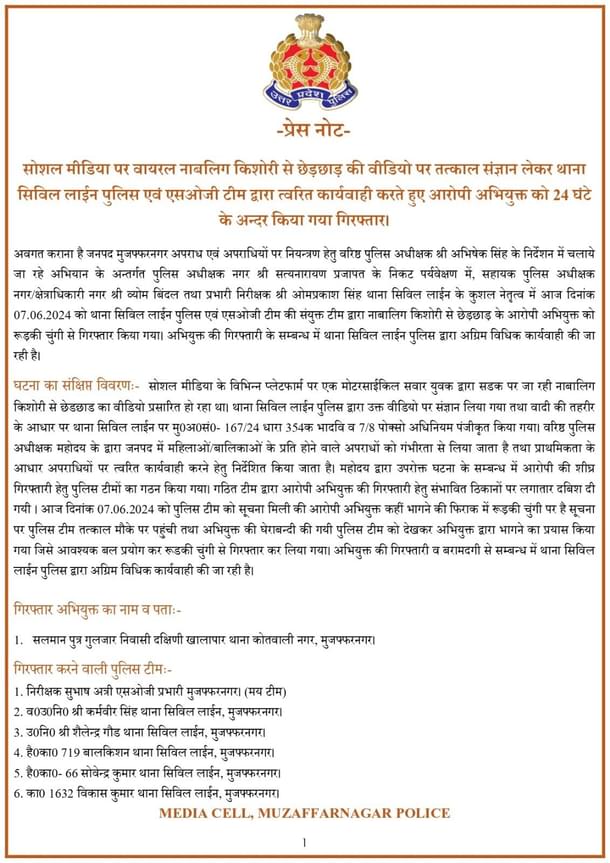
A visit to the colony
When I visited the Jat Colony on Saturday, the streets were eerily empty, with residents staying indoors to escape the scorching sun. The only person visible was an iron-wala, who directed me to the lane featured in the viral video that sparked widespread outrage.
The lane was also deserted. After knocking at a nearby house, a woman informed me that her neighbour, Vikas Baliyan, had made the video viral and assisted the police in apprehending the culprit.
Baliyan, found at home, was busy compiling complaint letters from victims of the molester.
"You came at a time when I was putting together these complaints to hand over to the police," he said with a smile. "After his arrest, I have asked women to come forward and give me handwritten accounts of their experiences. So far, I have received four or five letters," said Baliyan.
The letters, penned by married women as well as minor girls, describe how the molester threatened them with a bottle of acid, leaving them too terrified to speak out. This fear kept them silent until his arrest.
Baliyan revealed that the culprit had been preying on women in the colony for about three months. His activities took place in the afternoons when the streets were empty.
Despite multiple complaints to the local Civil Lines police station, the authorities had not taken any action, likely distracted by the ongoing elections. The victims, too, were hesitant to report the incidents due to social stigma and fear of being withdrawn from their studies by their parents.
However, resentment against the serial molester was growing.
Some families had captured footage of the molester on their home CCTVs, noting that he always wore a T-shirt and shorts, rode a bike with the last two digits of its number plate obscured with tape (the first two digits were ‘55’), and often headed towards Khalapar, a predominantly Muslim area. This detail fuelled suspicions about his religious identity.
Residents held a meeting last week and decided to take action. Armed with lathis, they planned to confront the molester if they spotted his bike.
Baliyan, however, was deeply troubled by this plan.
"I was very concerned. What if the residents missed and got injured by acid? What if they attacked the wrong person? What if the person died?" he said. "The message would have been that Jats in Muzaffarnagar, angry at Sanjeev Balyan's defeat in the recent elections, lynched a Muslim man. The opposition would have staged protests, blaming the Jats."
Fearing another outbreak of communal violence, Baliyan reviewed his CCTV footage and found a video of the molester outside his house. The incident had taken place a few days ago, involving a school-going girl headed to her sports classes. Baliyan’s wife had spotted her crying profusely and called her inside. The girl revealed the molestation and acid attack threat but urged them not to inform her parents, fearing her sports classes would be discontinued.
Baliyan shared the footage with the media, which did not reveal the face of the girl. The video quickly went viral, drawing attention from the highest levels of state government led by Chief Minister Yogi Adityanath, leading to Qureshi's arrest within a day.


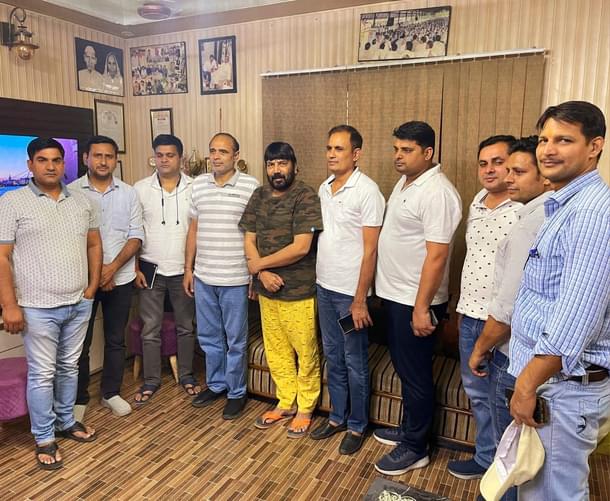
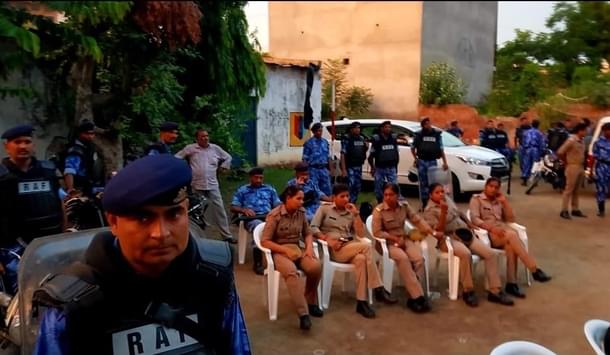
Historical context and rising tensions
Muzaffarnagar district, one of the most communally sensitive areas in Uttar Pradesh, comprises about 42 per cent Muslims, according to the 2011 census, with the remaining residents predominantly Hindus.
This region has experienced frequent communal violence over several decades, but the 2013 riots between the Muslim and Jat communities stand out as the worst in the state's recent history. The Jat community makes up about 10 per cent of the district's population.
It was in the Khalapar locality where then Lok Sabha MP from Muzaffarnagar, Kadir Rana of the Bahujan Samaj Party, delivered an inflammatory speech against Hindus and incited the riots in 2013.
In 2017, a police team attempting to arrest three individuals accused of cow slaughter in Khalapar was attacked with stones and firearms, resulting in severe injuries to the officers. Police had to run for their lives, leaving their vehicles as well as the accused behind.
During the nationwide protests against the Citizenship Amendment Act, Muzaffarnagar experienced significant violence, with Khalapar being one of the areas where it was triggered.
Given this history, the police anticipated similar resistance when they set out to arrest Mohammed Salman Qureshi.
Their investigation began with tracking down all bikes with number plates starting with 55, leading them to 11 vehicles. After visiting each registered address, they found Salman at the ninth location.
Although he initially escaped, he was eventually apprehended and now faces charges of assaulting and molesting women, including those under the Protection of Children from Sexual Offences (POCSO) Act.
The FIR number in the case is 167/24 filed at Civil Lines police station, filed on 7 June.
In Jat Colony, residents are left grappling with the reasons behind Salman's actions. A woman in her 40s, who requested anonymity, speculated that the hope of the BJP candidate losing in the recent Lok Sabha polls may have emboldened such behaviour.
It's worth noting that in 2014, a year after the riots, BJP's Sanjeev Balyan was elected MP and retained his seat in the 2019 elections. However, this time, Harendra Malik of the Samajwadi Party emerged victorious.
The Samajwadi Party governed Uttar Pradesh during the 2013 riots but was ousted by the BJP in the 2017 Assembly elections. Yogi Adityanath, the subsequent chief minister, retained his position after the 2022 Assembly elections.
The next assembly polls are scheduled for 2027, and the recent performance of the Samajwadi Party has given its supporters — who in Muzaffarnagar are mainly Muslims — hope of outshining the BJP in future elections.
"During our discussions, most of us believed that a Muslim man harassing women in our colony could be part of a larger plan to incite violence," the woman said. "If the police hadn’t acted this time, anything could have happened."
Vikas Baliyan noted that residents plan to honour the police team that captured Qureshi, believing that their swift action prevented a major incident.
In Muzaffarnagar, fears of renewed violence remain palpable.
Swati Goel Sharma is a senior editor at Swarajya. She tweets at @swati_gs.





